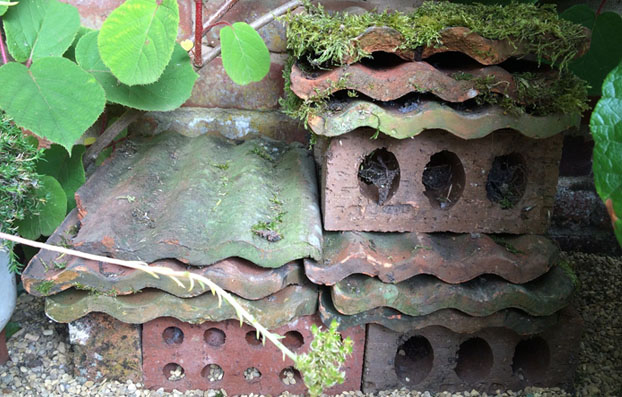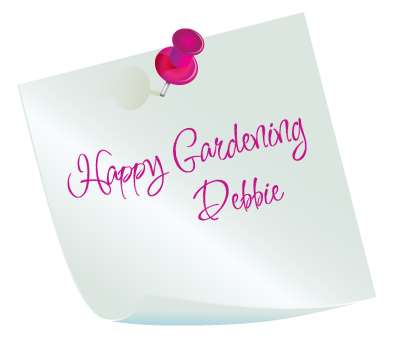Wildlife Welcome
November 2, 2016 1:04 pm Leave your thoughtsIn any wildlife friendly garden, I believe that diversity is the key. It’s not just about having a wide variety of plants. It’s also good to offer many different habitats. A good mixture will encourage the widest selection of wildlife possible.
A balanced garden environment will, by its nature, have hopefully fewer pests and generally more wildlife.
Let’s help address the balance by encouraging a wider variety of creatures into our gardens.
If you have the time and the materials you can build a wonderful, giant bug hotel. There’s a great project for one here www.wildaboutgardens.org.uk
Some of you may have noticed me post this picture recently.
What is it?
It’s a tiny bug house created for a client with bits we found lying around.
Where to place it:
We opted for a warm dry spot but in the shade. It’s at the base of a west facing wall in a sheltered corner that gets the sun for most of the day.
We placed it on the ground at the foot of the warm wall but in the shade of a bench and overhanging planting. It is a fairly secluded spot and not somewhere that it will get disturbed.
When looking for a site, decide what you are trying to attract. Our bug house is more likely to attract ground dwellers. If you want to attract flying insects you probably want to place your bug house higher up on a sunny wall. Look to nature to see where creatures find to hide. Try looking in the borders close by. See what kinds of creatures are using that location or environment.
How we made it:
We used Solid bricks, Bricks with different sized holes and Clay tiles.
If you’re not fortunate enough to have suitable bricks with holes to hand, your local builders’ merchants will surely have some for sale.
Potential Homes for Wildlife
We placed solid bricks at either side and two different bricks with holes across the front.
We left the inside fairly open but you could add dried stems, dried grass or straw to create a different environment.
We then covered these with the tiles. We laid the tiles so that the ridges created gaps of different sizes. The tiles on the top of the ground floor were overlapped to create a fairly snug environment. The first floor was created in the same way.
The top tile had a broken edge and was covered in moss. We left the moss on to help it to blend in. It’s also likely that it already has its own community of minute creatures and could possibly attract more.
Who might live in it?
Before we even got the last tiles on, a large Spider rushed in to his new home. I guess he must have been disturbed by us rummaging around at the foot of his wall.
Not just spiders but many other ground dwellers would make a home in a house like this. We have found Newts in the vicinity, under plants around the edge of the nearby border.
It may even a attract a Frog or two not to mention the myriad of other little ground dwellers like Woodlice, Millipedes, Centipedes and Slugs. There are huddles of Snails along the base of the wall and Ground Beetles who will feed on any soft bodied creatures. Their diet includes aphids, caterpillars, earthworms, fly maggots and their pupae, grubs, slugs, snails and weevils. Many of these would be classed as garden pests.
We don’t want to disturb the bug house so we can only surmise at the identity of its occupants.
Let’s be clear about why we are inviting these creatures to live in our gardens.
Yes of course it’s about pollination and pest control with good bugs eating bad bugs. But let’s face it; some of those good bugs are going to get eaten too! The ground beetles may fall prey to larger creatures. But in turn those larger creatures are also going to eat some of the bad bugs. Hedgehogs eat ground beetles but they also eat slugs and snails.
It’s all about balance!
My client has since added a few dried stems, like these, to some of the larger holes in our bug house.
We recently found that those at ground level had been ripped out again. No doubt something larger had seen the opportunity of a tasty treat. Perhaps we have provided a buffet for one of the resident hedgehogs.
Maybe some small critters will have the sense to crawl deeply into the recesses of the house. They, at least, will be protected from these particular prying noses, claws and teeth!
For a garden that has a Bountiful supply of Bugs and other wildlife advice please get in touch today. I also offer inspirational talks to groups with an interest in gardening.
So until we meet again………..










